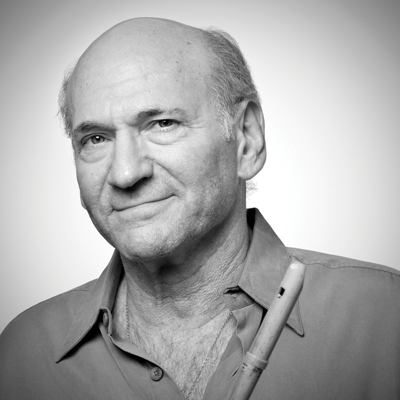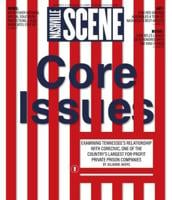By the end of 1971, Miles Davis had made a cottage industry of confounding critics and turning off longtime fans. Beginning with 1969's In a Silent Way and continuing with Bitches Brew ('70), Jack Johnson ('71) and Live-Evil ('71), the pioneering jazz trumpeter had embarked on a loud, electric free-form excursion that was every bit as earth-rattling — and for many fans, blasphemous — as Bob Dylan going electric a few years earlier.
But no album in Davis' extensive canon offended more folks than 1972's On the Corner, an acid-funk freakout that saw Miles & Co. venture even further into the weird, dark corners of the human mind. In Jazz Journal, critic Ron Brown wrote, "I'd like to think that nobody could be so easily pleased as to dig this record to any extent." Eugene Chadbourne, a fairly iconoclastic musician in his own right, turned up his nose at the album in a review for Canadian jazz magazine CODA: "His new music is pure arrogance. It's like coming home and finding Miles there, his fancy feet up on your favorite chair."
Even saxophonist Dave Liebman wasn't sure what to make of On the Corner — and he was in the band that played on the first half of the album. In fact, that's Liebman playing the very first solo on the album's opening title track, and his recollection of the experience is downright jaw-dropping.
"I was at a doctor's office or something in downtown Brooklyn," Liebman tells the Scene by phone from his home in the Poconos. "And my mother called and said, 'Someone just called named Teo Macero, and he said come now to the studio [to] record with Miles Davis.'
"I said, 'What?' I happened to have my soprano with me. It was complete, absolute luck of the draw. That I'm even talking to you now could be because of that moment. I had my soprano. I knew where the studio was: Columbia Studios, Madison Avenue and 52nd. ... I knew I had to get there fast. The way things worked in those days, they did a lot of sessions and sometimes guys didn't show. ...
"And when you listen to On the Corner, that first solo is me trying find my way to a key center, because I had no headphones. [Laughs.] It was all electric instruments [plugged directly into the recording console and mostly inaudible] except for the drums. So I couldn't hear any keys or anything. I just heard clinking keyboards and guitar. I'm fumbling around to find out it's actually in E flat. And that was that track."
Of course, today, with the benefit of 40-plus years of perspective, that track and much of Davis' early-'70s output sounds absolutely mystical and visionary. The four tracks from On the Corner that Liebman played on are essentially one long modal jam (broken up into separate "songs" to fulfill record company expectations), and the music bristles with a primal energy that sounds just as urgent today, thanks in large part to an insanely twisted funk groove provided by drummers Billy Hart and Jack DeJohnette and bassist Michael Henderson. Whether or not Davis ever experimented with hallucinogens, this is some of the most psychedelic music around. Jazz purists may have been nostalgic for the past, but as he said in his autobiography, Davis wanted to reach young black audiences, not the same old stale jazz crowd.
After working on On the Corner, Liebman toured with Davis for about 18 months, and he says it was a pretty mind-blowing experience, even if many in the audience missed the point.
"In those days, just the fact there was an electric bass was enough to turn everybody off," Liebman recalls. "How are you going to have an electric bass do walking jazz? OK, so they weren't walking, because they played in funk bands. So there's the electric bass, the guitar, and they turned me up so loud. I mean, our band was loud, man. I was wired up to three Marshall amps. I had 800 watts, and I could hardly hear myself. [Laughs.] It was the loudest band I ever heard or played in."
And at the beginning of Liebman's stint in the band, he was sometimes as mystified as the audience.
"The music appeared to be pretty chaotic and disorganized," Liebman says. "I have to say that in my time there with him, I wasn't sure for a few months what I was doing or what I was supposed to do. He never said anything about what to play. And then after a few months, one night it clicked. We'd listen to the tape back after the gig. I hung pretty deep with him. I finally got the point a little bit."
And years later, when Liebman was asked to write the liner notes for the re-release of Dark Magus — a recording of a 1974 Miles Davis concert at Carnegie Hall featuring material in a similar vein to On the Corner — he sat down and listened to music for the first time in 20 or so years. And something clicked.
"I said, 'You know what? This motherfucker knew what he was doing.' ... I realized there was a method to the madness — later on, in looking back. At that time, I didn't know what the hell he was doing. And I wasn't sure he knew what he was doing. But that's what that period was."
On Friday night at 3rd & Lindsley, in what will undoubtedly be one of the local jazz events of the year, Liebman, who has had a thriving career in the ensuing years, will join a crack band of Nashville jazz all-stars — saxophonist Jeff Coffin, guitarist James DaSilva, drummer Chester Thompson, keyboardist Chris Walters and bassist Victor Wooten — to re-create the music from On the Corner. Liebman says they'll probably throw in a couple of other tunes from that era of Davis' career too. This is likely to be one of the freakiest, funkiest throw-downs the city has ever seen, and is not to be missed.
Read the full interview with Liebman, including in-depth recollections of his time with Miles Davis, at nashvillecream.com.
Email Music@nashvillescene.com





